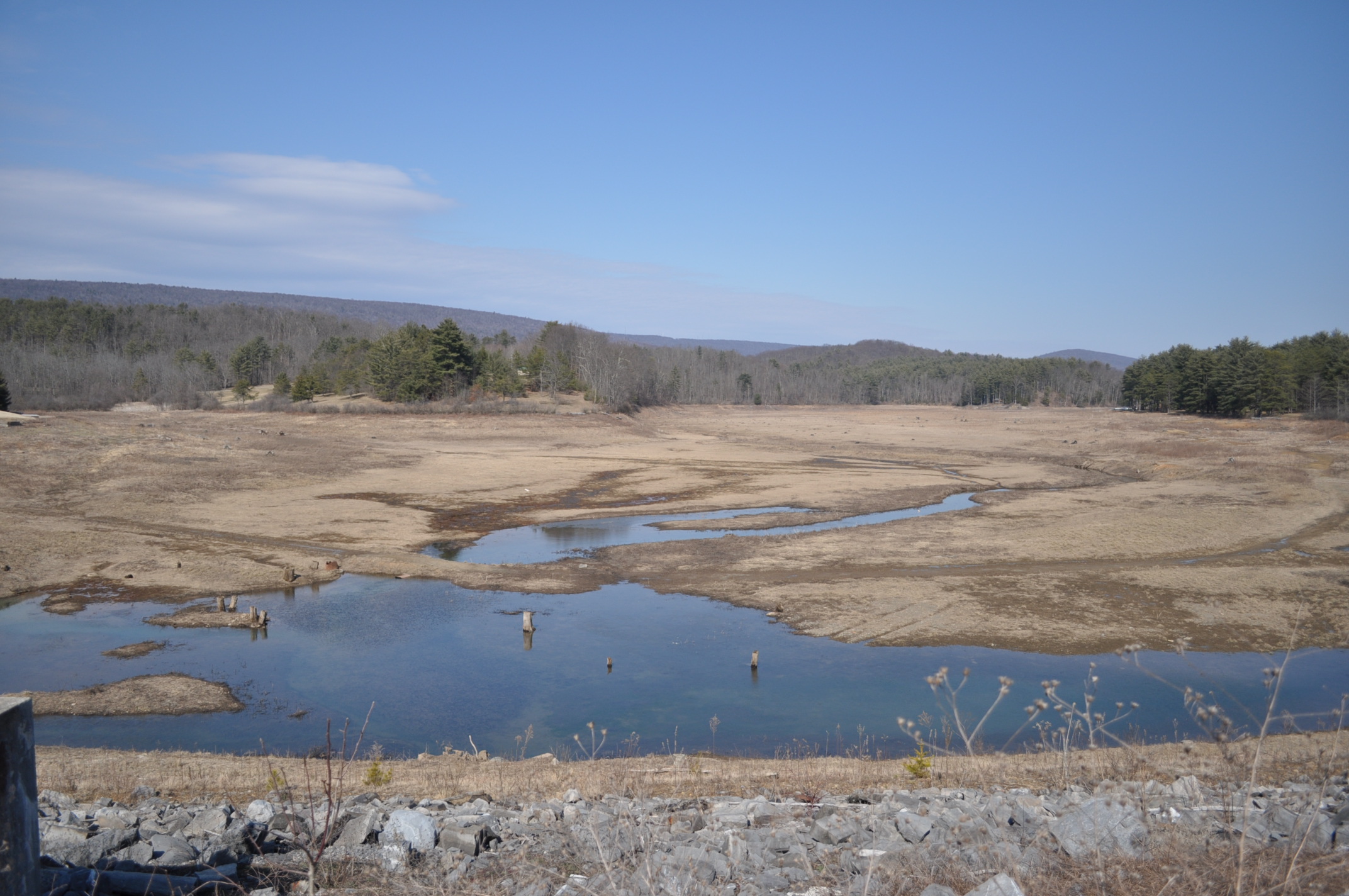
Site 6 of the Long-term Ecological Reflections Project (LTERP) at Shaver’s Creek is Lake Perez—whether it is on a boat in the water, on foot through a drained lakebed, or on skates and skis in the winter.
For the next 100 years, writers, artists, musicians, children, students, and community members are invited to reflect on this and the seven other locations designated as part of the LTERP. This collection of reflections will provide an interesting and unique record over the next century so that future generations can better learn the story of this place.
Please enjoy these excerpts from several contributors to the project, and follow the links to read their full Creek Journals.
Mark McLaughlin (2007)
The boardwalk is always going to be one of my favorite spots. It allows anyone to be IN the Creek’s environment. To immerse yourself into Shaver’s Creek Environmental Center, without getting wet! The bird life is terrific; there are herps and insects everywhere; and you are in the creek with all the aquatic life abounding! It is also surprisingly quiet — from people that is, despite being on the lake, where sound travels so well, and being on the central hiking artery around the entire lake community.
Ian Marshall, Author/LTERP Founder (2006)
And my goodness, it sure feels good to walk, or to skate, to be in the world as a physical being, to look at the sheer variety of what there is to see from the lake — the stretch of the horizon, the curves of my skate strides carved into black ice. And to hear my skates rumble and sizzle across hard ice, and to pause and hear apparent silence at first, and then a snatch or two of what the trees are saying to the breeze. And then to skate again, feel wind against my face and then to realize that it’s not the air moving, it’s me.
Scott Weidensaul, Author (2006)
We are gliding over ghost trees rising dimly from the deep water, truncated limbs straining toward the sun they last felt half a century ago. A wispy fur of orangish algae cloaks them, hanging motionless as we pass above, as if we are sliding across a photograph, or something cast in ice.
David Gessner, Author (2012)
After breakfast, I take my coffee down for a walk in the bowl. Black dragonfly with a bright green body. [My dragonfly is an ebony jewelwing — a fine name.] A cache of tires. A MinuteMaid lemonade can. But not too trashy, really. Fields of tall grass and a weed whose name I will learn by the end of the week… After hoofing it across the canyon, I reach the mighty Colorado. Maybe not, but I do hike down the middle of the creek in my sneakers and long pants. My personal temperature is still strangely off and wavering, and it feels good to make my hike a watery one.
Todd Davis (2008)
Wet Earth
The lake is half drained, and where water slid
away fast, cracks have appeared, as has the detritus
of our living. Geese seek out the few places fish
still swim, and killdeer set up home near the cinder-
blocks and tires that served as nests of another kind.
Tree stumps line the lakebed, solid despite years
submerged. I imagine this grove before any ax
cleared it, before the stream at the far side
was dammed and this depression in the earth
accepted the weight of water. A blue jay
in an ash tree sneers at our efforts, and the smell
of wet earth drying is everywhere.
For more information
For more information on the Long-term Ecological Reflections Project, or to learn how to contribute material, please email Doug Wentzel at djw105@psu.edu.
